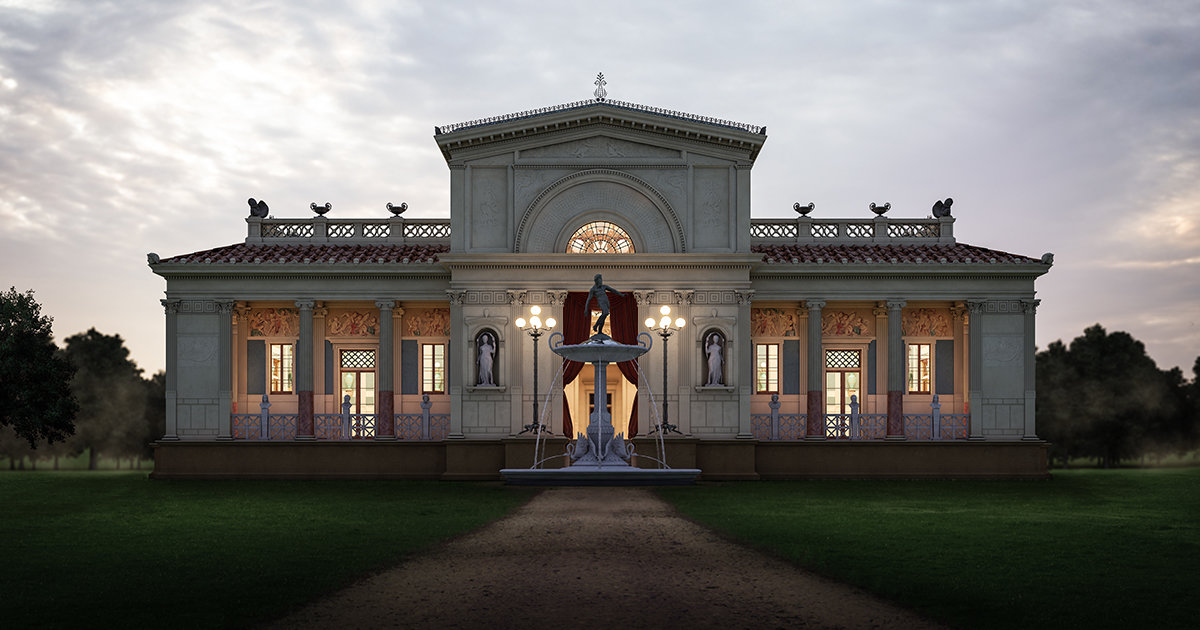
The aim of the project is the digital reconstruction of the “Gran Caffé” by Giuseppe Damiani Almeyda, youth project never built, which can be dated between 1861 and 1863.
The original drawings from Damiani's private archive, three watercolor panels depicting the plan, the main elevation and the cross section, were used as reference images in the operation of three-dimensional redesign, which was performed with a dual purpose of interpretation and communication. In fact, it has allowed to achieve a deep level of knowledge of the building, acting as a geometric-modular, functional and volumetric analysis tool and also it has made possible the view of a great architectural value building (although it has never been constructed) through static images and virtual immersive display systems, allowing to the user to navigate into the reconstructed environment.
For this purpose, the production of images with photo-realistic rendering was an obvious choice and were needed attention to detail in the modeling phase, study in depth of the materials, complex texturing and mapping, a physical daylight system setup of the scene and the use of photo rendering techniques.
The work of Giuseppe Di Bartolo can be considered a reference project in the context of analysis and reconstruction of historic buildings, because it developes a rigorous methodology that accurately identifies the phases of work: the historical background of the author and the cultural context in which he operates, the non-automatic vectorization of original drawings, the research of design dicrepancies, often present even in projects of great architects, modular systems based on the used units of measurement, the volumetric analysis, the observation of watercolor techniques and their transformation into textures, the study of shadows and light, as well as the careful application of perspective as expressive code, along with the groundbreaking study of the techniques of rendering, represent the phases of an analytical and communication process also applicable to other cases of studies concerning archive’s drawings.
The developed method provides results that have a dual role: it provides a lot of information on the project under analysis, to be made available even to scholars of history and architecture and opens interesting insights about the author. In this case, for example, it was possible to analyze this project and see the spaces originally designed in plan, elevation and section, and show the results of the architectural theories of the great master Giuseppe Damiani Almeyda.